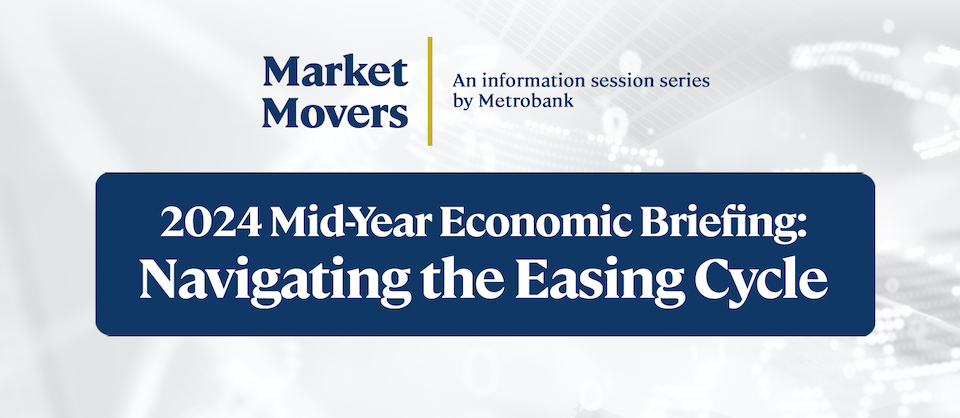Investing strategy shifts amid across-the-board tariffs
Our investment counselors outline their strategy, as Trump announces broad tariffs

It’s here. For months, people talked about US President Donald Trump’s sweeping tariffs.
Overnight, he announced broad tariffs across all imports to the US, with additional reciprocal ones. The levy on the Philippines is now at 17%.
In light of recent developments, it is crucial to assess its broader implications with a measured approach.
If the past could serve as a lesson, Trump had imposed tariffs and often reversed course when met with strong retaliation. A prolonged tit-for-tat tariff conflict remains unsustainable—though it may generate short-term market volatility and trading opportunities, the US does not maintain absolute leverage in such negotiations.
For the Philippines, the direct impact is anticipated to be minimal due to its limited trade imbalance with the US. Its primary trade sector—services— also remains unaffected at this stage.
Here is our strategy for asset classes:
Fixed Income Strategy
Recent market movements have slightly shifted the investment approach. Initially, Metrobank’s strategy was to reduce duration, as fixed income markets had rallied beyond initial targets.
However, given evolving conditions, maintaining duration of approximately 5 years is recommended, while avoiding significant extensions due to the stagflationary environment. Tariff-driven inflationary pressure could impact growth, with some international banks estimating a potential 1% increase in US core inflation this year, presenting a downside risk to economic expansion. At this stage, mild stagflation remains the base case.
Philippine Bonds: We maintain our preference for local government securities and corporate bonds within 5 years or shorter, balancing yield opportunities with risk management. With the current economic landscape painting slowing growth and inflationary pressure, a defensive positioning remains prudent. Investors must prepare for potential volatility, particularly as external risks such as US market weakness and global credit conditions could spill over into local fixed-income markets.
Global Credits: In the current environment, credit markets warrant a defensive approach. We continue to favor high-quality investment-grade (IG) credits within the 5- to 7- tenor bucket. Long-term bonds could underperform in a market that is not yet in a full bull cycle such as now. Similarly, for investors seeking treasury-proxies, a stagflationary backdrop supports a strategy favoring bonds with maturities of five years or shorter. Historically, a 3% drop in S&P 500 futures has translated into a 10-basis point widening in spreads, presenting potential entry points for investors looking to capitalize on market dislocations.
US Treasuries: The current conditions present a strategic opportunity to gradually scale into US Treasuries. Key levels to watch include a 5-year UST yield drop to 3.4% and a 10-year UST yield drop to 4.0%, which may serve as entry points before a potential stabilization and reversal. Taking a measured approach, carefully timing allocations as the market evolves is prudent.
Credit Default Swaps: Credit default swaps (CDS) have started to show movement, signaling a potential breakout that investors should monitor closely. At the same time, funding pressure in credit markets is beginning to emerge. While high-quality names such as Bank of the Philippine Islands and Jollibee Foods Corp. are still maintaining tight credit spreads, persistent funding stress could lead to broader systemic risks.
Asian IG Credits: High-quality Asian IG bonds continue to trade within tight spreads, but there is potential for spreads to widen by 10-20 basis points. This presents a selective opportunity for investors who can position themselves strategically in the market. While overall sentiment remains cautious, investors may choose to take advantage of widening spreads in fundamentally strong names, ensuring a balance between risk and reward. By maintaining a defensive yet opportunistic approach across fixed income markets, investors can position themselves effectively for both near-term volatility and long-term stability.
Equity Strategy
Staying defensive in both global and local equities remain the preferred strategy. Positioning in sectors with strong fundamentals and predictable cash flows may allow resilience in a volatile market environment.
Local Equity: We prioritize resilient-earnings stories with dividend support. While limited direct exposure to US trade tensions helps buffer downside risks, global volatility could weigh on sentiment. We favor defensive sectors such as financials—particularly banks and insurers with consistent dividend profiles—for stability. Focus remains on companies with robust earnings and strong balance sheets.
Global Equity: We maintain a defensive stance in equities, focusing on resilient sectors such as consumer staples, utilities, and healthcare before increasing risk exposure. Given the ongoing correction in US markets, with the S&P 500 down 8% and the NASDAQ declining by 13%, volatility remains elevated. Should either one of the stock indices’ losses extend to -15%, a deeper technical correction could present a tactical buying opportunity for selective investors. However, a measured approach is necessary to navigate near-term uncertainties.
(Disclaimer: This is general investment information only and does not constitute an offer or guarantee, with all investment decisions made at your own risk. The bank takes no responsibility for any potential losses.)







 DOWNLOAD
DOWNLOAD




 By Metrobank Investment Counselor Department
By Metrobank Investment Counselor Department